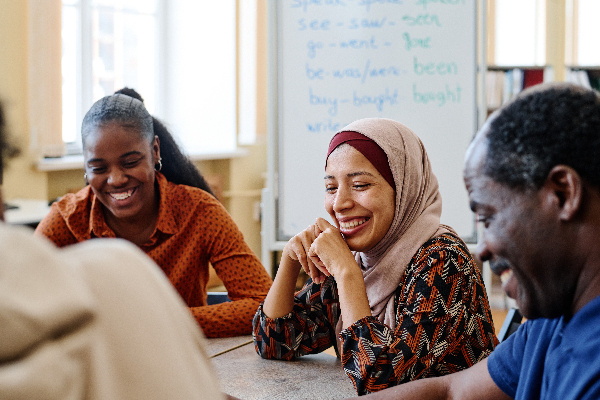Published on
Parallel Perspectives: Community Impact on the Modern Learner

Throughout my life, I have been fortunate to learn invaluable lessons that hold relevance across various aspects. Growing up in Ohio, there was a community of Amish people whose lifestyle shaped the way I view higher education, workforce and economic development. Its emphasis on community, practical skills that allow one to deal effectively with life’s demands and a clear direction of purpose has influenced my perspective on the value of collaboration, experiential learning and the integration of academic knowledge into real-world experience. These values that shape their community members resemble community centricity in higher education, which helps to shape the modern learner.
Community centricity focuses attention on the role community plays in the learning experience. Community provides the following to the modern learner:
- Supportive networks from which to learn and gain knowledge
- Learning through others as individuals or as a collective
- Accessibility to resources and learning tools
- Participation and engagement with others who are different from them
- Awareness of others and the ability to learn from diverse views
- Real-time and real-world experience for strategic decision-making
Community serves to provide a rich environment where individuals can grow personally and academically.
At the center of the foundation to the community-centric approach are emphasis, structure and goals. Purpose and values, organization and governance, economics, social engagement and diversity and inclusivity are all embedded within this approach. Each of these factors is instrumental in shaping the modern learners’ experience and outcomes.
Purpose and Values
Higher education has academic programming that prepares students for careers in high-demand industries. Higher education’s mission is to build skills, encourage critical thought, promote emotional intelligence and build strong interpersonal relationships. For the Amish community, this means upholding and preserving traditional values among its members through the teaching of religious beliefs and cultural practices. Its practices are strongly rooted in community and building close-knit social bonds.
Organization and Governance
Higher education is led by a governing body, the president or a chancellor. Decisions regarding financial oversight, policies, technology, infrastructure and strategic direction are made at the highest level. Through organization and governance, all decisions lead to the focus being on the student and their success. Amish communities are decentralized and governed by social structure. Typically, this social structure includes community elders and church leaders. Decisions are made with community members in mind and typically by consensus.
Economics
Higher ed often serves as an economic engine for a community. Colleges and universities are part of the economic ecosystem alongside industry, government and nonprofits in driving economic prosperity. It comes by way of innovation, workforce development and research. The Amish are driven by self-sufficiency and sustainability. Their major economic impact comes from agriculture, craftsmanship like furniture or small business ventures like bakeries or quilt shops. The skill sets these occupations require are taught from a youthful age and serve the Amish well through their life.
Social Engagement
Social engagement in higher education is imperative for innovation, community partnerships, student engagement and learning opportunity. Social engagement is meaningful in supporting faculty, growing academic programs and providing an overall healthy environment that fosters community. It also is of the utmost importance to the Amish community. Social engagement defines the Amish cultural identity through community coherence, the creation of a sense of belonging, and total community well-being. The many aspects of social engagement are what sustain the Amish community’s resiliency and their successes in maintaining social order.
Diversity and Inclusion
Higher education promotes diversity, equity and inclusion as it is fundamental to innovation, growth and a healthy community. Diversity and inclusion also encourage critical thinking for the purposes of building skills, learning to solve problems and to make best life choices. Amish communities are mostly homogenous and limited in diversity and viewpoints. The Amish share the same language (High German, Pennsylvania Dutch and English), culture and religious backgrounds. Interdependency from outside communities allows the Amish to center around their core beliefs and live a simple life of faith.
Reflection
Both these communities seek knowledge and skills development but in varying ways. Although different, both are impactful to the context in which the learner learns and the importance to community. Skills development and workforce competence come from the ability to be community-centric and build strong learning pathways. The modern learner, through higher education, is flexible and ever-adapting to change and digital technologies. The Amish learner is rooted in tradition and cultural beliefs. The point is not that one method is better than the other.
Although it is important to note that the Amish have sustained for years through changing, even challenging, times. They celebrate economic prosperity through their commitment to their model of sustainable living. Perhaps a lesson for broader society? But the major lesson is the importance of community centricity. As the Amish proverb goes, “Community is like an old coat—you aren’t aware of it until it is taken away.” For those of us in higher education working to educate and empower the modern learner, we must remember a community-centric approach is our essential element in providing for those we serve—the modern learner.



